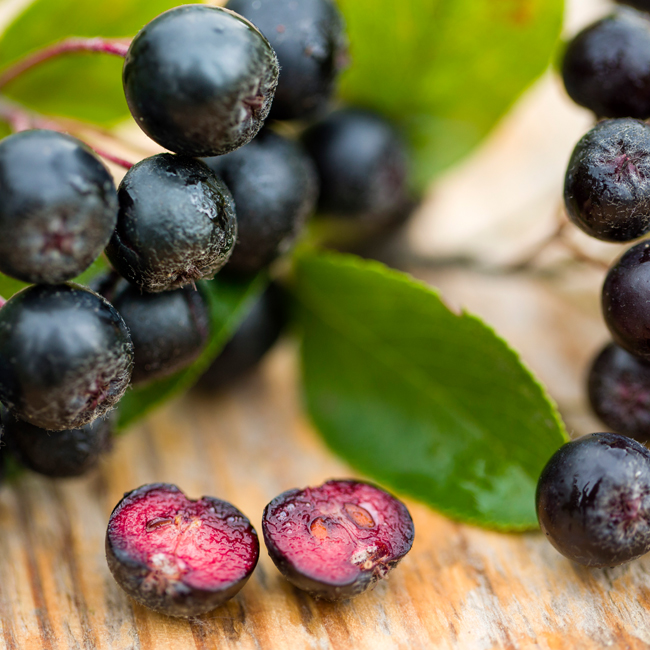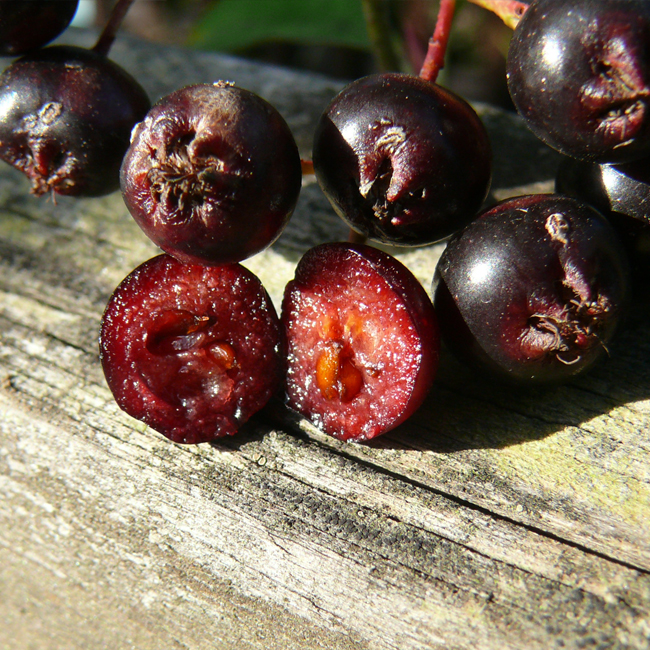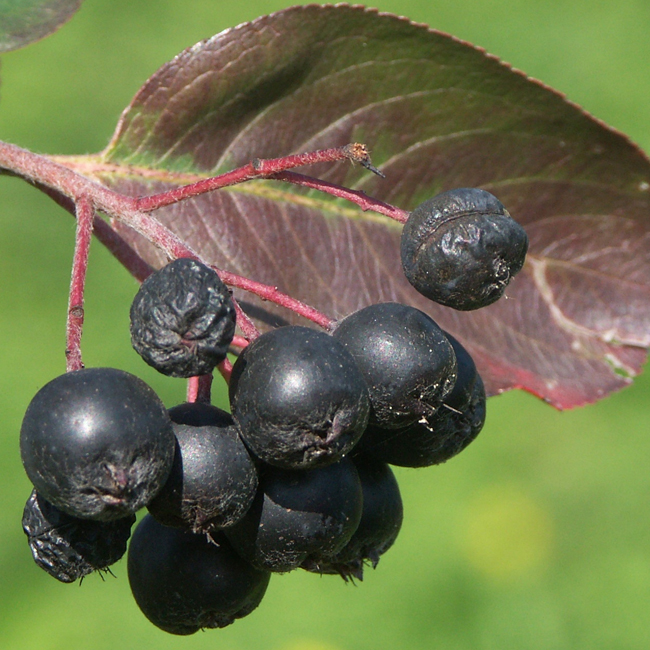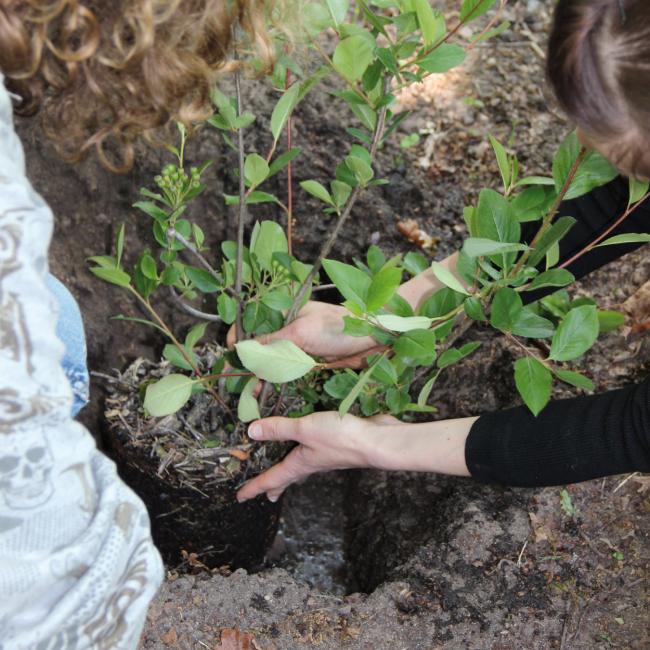
It is one of the most adaptable fruits, which has travelled a long way: the Aronia plant. Aronia was mentioned for the first time in 1786. The French botanist Andre Mischaux discovered the plant in North America, specifically in South Carolina, USA. From there, Aronia travelled via Russia to Germany, where it has been cultivated and grown since the 1970s. (Read more about the history here) The biggest merits for the cultivation must be attributed to the Russian botanist Ivan V. Michurin (1855-1935).
What makes the plant so special?
Plantation operators value Aronia for its pest resistance, high yields and very modest soil requirements. Small gardeners are attracted by its appearance, wonderful blossoms in May and strongly coloured leaves in autumn. The small berry also scores with various possibilities of processing for foods and drinks.
Different species of Aronia
The Aronia plant is not only very adaptable, it is also utmost frost-resistant. Temperatures down to -35°C are no problem for it. The plant even protects itself against environmental influences, such as UV-radiation and pollutants. It has excellently adapted itself to the continental climate, which means that Aronia plants survive extreme dry and hot periods with almost no damage, withstand autumn storms and feature low disease susceptibility. Even the late frosts in spring cannot damage the plant due to its late blossoming in mid-May. Really a modest plant!
The Aronia berries are divided into three species: Aronia melanocarpa (black chokeberry), Aronia arbutifolia (red chokeberry) and Aronia prunifolia (purple chokeberry). Today, mainly the Aronia melanocarpa is processed. This species not only offers high yields, but it is also resilient, weather-resistant and beautiful with the strong colour of its leaves.
Within the species Aronia melanocarpa, several cultivars have evolved. Below you can find a brief selection:
- Origin: Russia
- Densely twigged
- Big juicy berries
- Aromatic
- Suitable for juices and jams
- Height up to 2.50 m
- Fruits in abundance
- Origin: Finland
- Big round berries
- Strong gloss
- Suitable as a hedge plant
- Harvest from August until the end of September
- Height up to 2.50 m
- Fruits in abundance
- Origin: Denmark
- Dark, strong leaves
- Smaller fruits
- More bitter in taste
- Early colouring of leaves
- Height up to 1.50 m
- Fruits in abundance
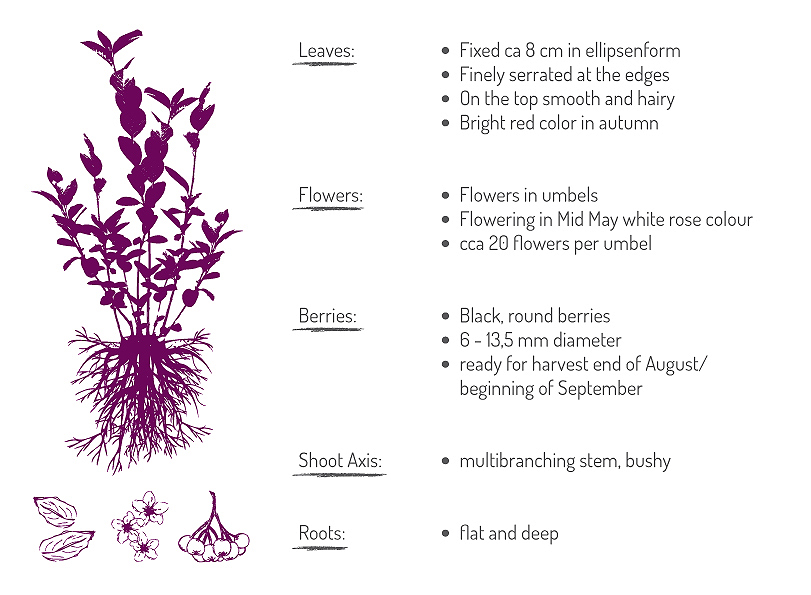
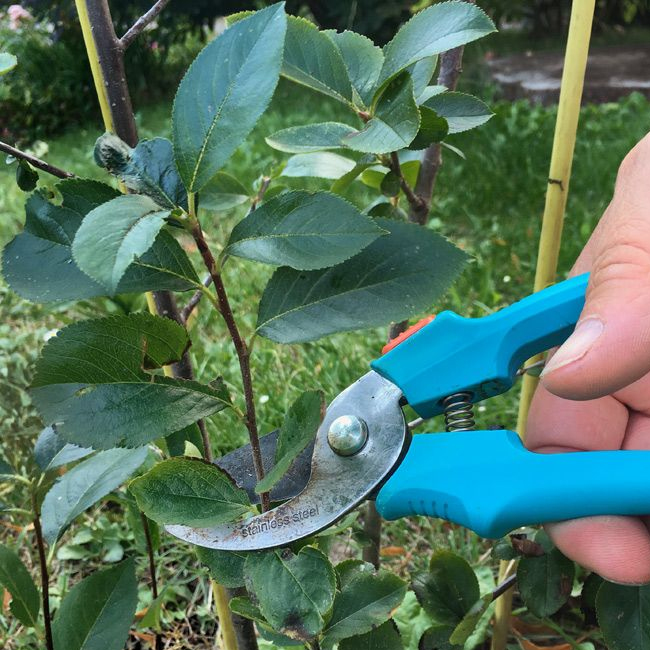
Pruning and Care
Aronia shrubs can be found in many front gardens. Due to its relatively modest demands, the robust plant does not require extremely green fingers. It is possible to positively influence the yield of the plant with a little pruning.
Here we give you several important tips. With Aronia ORIGINAL you find a choice of high-quality Aronia plants and different pruning instructions (for pot plants and bare-root plants), as well as an instruction for correct planting. Give an Aronia plant as a gift for a new home.
With this link you will reach our choice of themes about plants.
